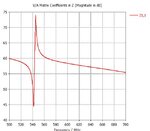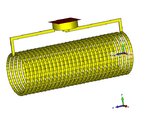bahramse
Newbie level 6
Hello ,
I designed a simple solenoid coil in CST and after the simulation it gives me negative value for inductance,
I have read some post about this issue and some propose to rotate the coil or something like this which I didnt understand at all.
the most interesting part is that the inductance is frequency dependent, I mean in some frequency range it is positive and in some region it goes to zero and then to negative.
Can anybody help me to fix this problem, thank you all in advance.
I designed a simple solenoid coil in CST and after the simulation it gives me negative value for inductance,
I have read some post about this issue and some propose to rotate the coil or something like this which I didnt understand at all.
the most interesting part is that the inductance is frequency dependent, I mean in some frequency range it is positive and in some region it goes to zero and then to negative.
Can anybody help me to fix this problem, thank you all in advance.







